All About Buff Orpingtons: A Classic Favorite
Inside: A look at one of the most popular breeds, the fluffy and friendly Buff Orpington. It will lay a brown eggs and, as a bonus, be your new best friend.
While not the most strictly practical birds, this is one is my personal favorite of all chicken breeds because they’re friendly and beautiful. Many people call them the Golden Retriever of chickens, and so they are. They’re perfect for beginners, families with kids, and anyone who wants an egg layer and a pet all in one.

Let me tell you exactly why I love them, and how to decide if they’re right for you.
At a Glance
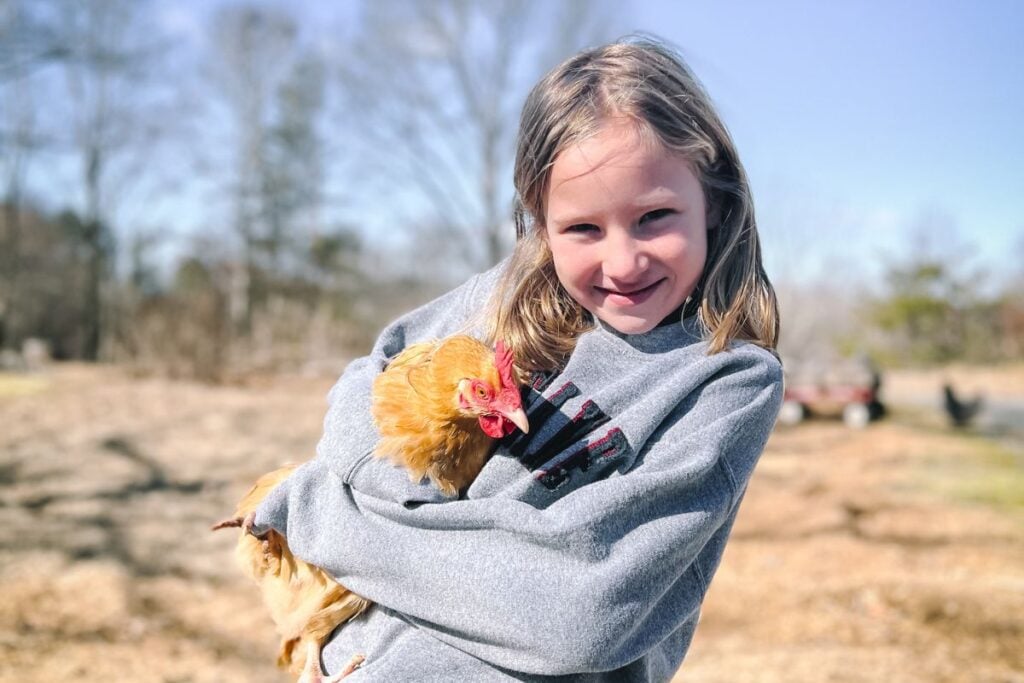
SUPER FRIENDLY
They will follow you around looking for attention and treats, like a puppy.

Decent Layers
They’ll never win a battle of pure productivity, but will give you 4-5 eggs a week on average.
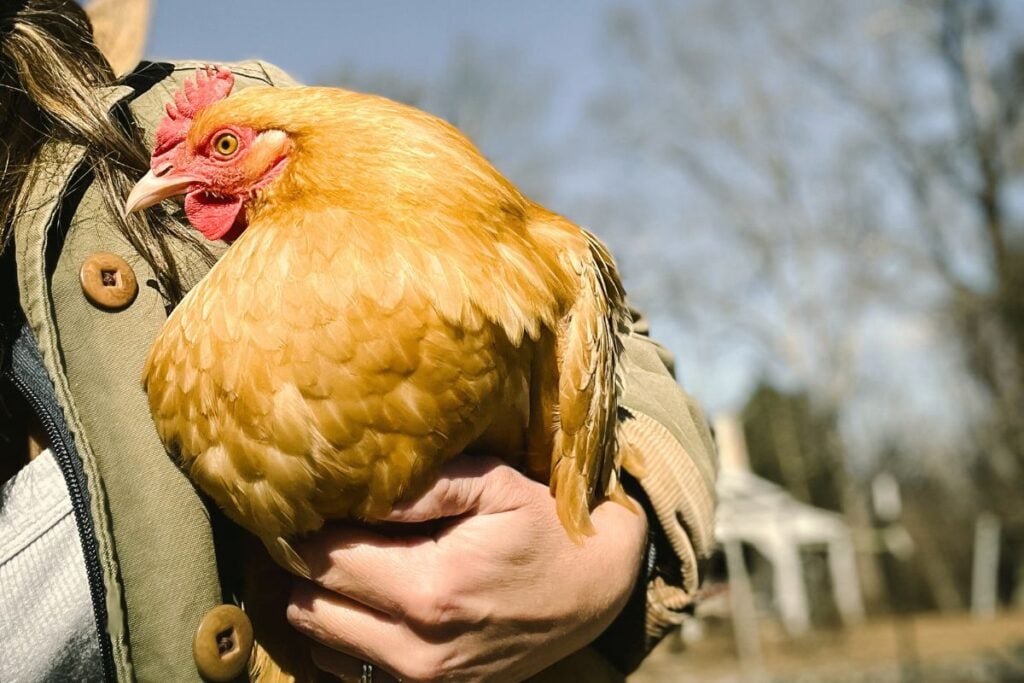
Cold Hardy
But not great in heat (they are, after all, huge, with lots of feathers.)
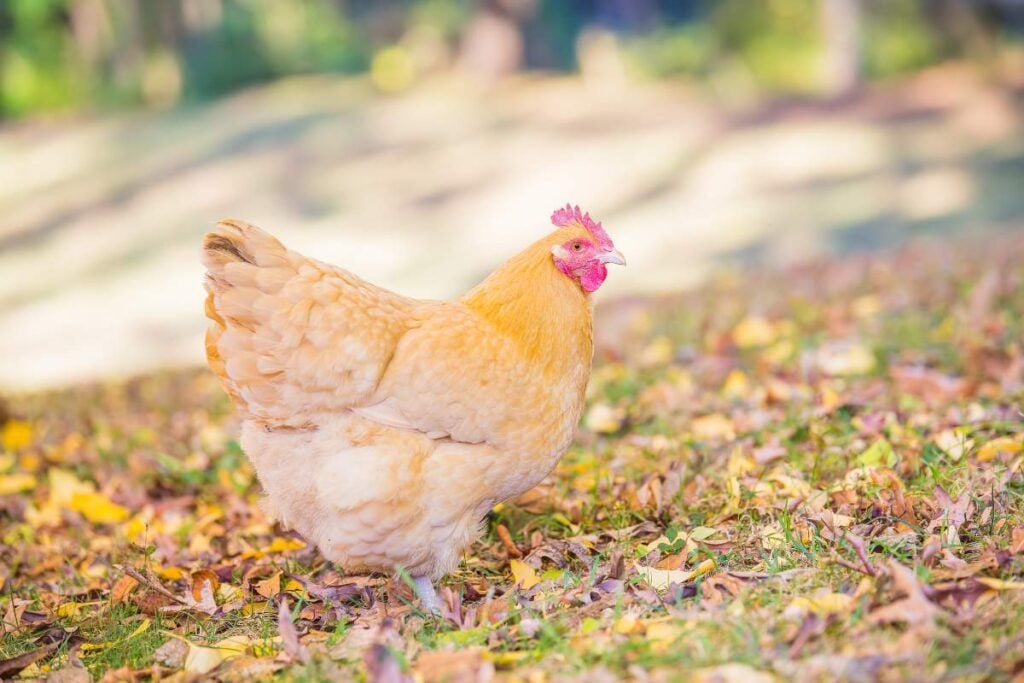
Beautiful!
The most lovely classic backyard chicken. My favorite.
Buff Orpington Chicken Temperament and Personality
This breed’s claim to fame is it’s personality. They are super, super sweet. If you want birds that follow you around the yard and let you pick them up, these are your girls.
They’re perfect for families with small children too because of their friendly personalities.
One thing to keep in mind: that sweet personality can disappear when they go broody. (And this breed is prone to broodiness.)
Buff Orpington Egg Production
Let’s be honest about eggs: they lay well, but not amazingly. You’ll get about 4-5 lovely brown eggs per week from each hen. This adds up to around 200-250 eggs per year. Buff Orpington eggs are beautiful – creamy pale brown, with some that are almost creamy.
They lay well all year round, with the typical small dips in production during the winter months.
If you want LOTS of eggs, you might want to add some White Leghorns or Cinnamon Queens to your flock.
Size and Appearance
One thing you’ll notice right away about these birds: they’re huge. The hens usually weigh 8-10 pounds, and the roosters are even bigger at 10-12 pounds. Their fluffy golden feathers make them look big, like giant teddy bears waddling in your yard. (Adorable.)
But here’s what you need to know: all those beautiful feathers aren’t just for show. Underneath, they have a broad, deep breast and a plump, rounded body. That size comes with a trade-off, though; they eat A LOT more than smaller breeds.
These girls will need more food than something like a Leghorn, and they won’t give you quite as many eggs in return. They are not what is referred to as a “thrifty” breed.
Caring for an Orpington Chicken
Here’s everything you need to keep your backyard flocks happy and healthy:
Space and Housing:
- Your coop needs at least 4 square feet per hen.
- Plan on 8-10 square feet of run space for each bird (or free range them)
- Install sturdy roosts
Feeding:
- Plan on 1/4 pound of layer feed per hen each day
- Add some healthy treats like scratch grains and fresh veggies
- Yes, they will eat more than smaller breeds!
- Always keep fresh water available
- Use sturdy feeders they can’t knock over
Temperature:
- They handle cold super well.
- Provide extra care in summer. Make sure they have plenty of shade, water, and good ventilation in the coop.
Daily Care:
- Check nesting boxes often – they can go broody
- Watch for any limping – big birds can have leg issues
- Clean their coop regularly
This is all pretty standard chicken care. The only special thing for this breed is keeping them cool and understanding they eat a lot.
Recommended Products:
Manna Pro Crushed Oyster Shell Calcium Supplement For Laying Chickens – Poultry Treat – 5 lbs.Manna Pro 7-Grain Ultimate Chicken Scratch – Scratch Grain Treat for Chickens and Other Birds – Non-GMO Natural Ingredients – 10 lbsFLYGRUBS Superior to Dried Mealworms for Chickens (5lb) – 85X More Calcium Than Live mealworms – Non-GMO Chicken Feed – BSFL Treats for Hens, Ducks, Turkeys, Wild Birds, Turtles, Quails
Buff Orpington Roosters
Some say Buff Orpington roosters are gentle. But that’s not what we’ve seen. Every Buff rooster we’ve had was just as aggressive as other breeds. And because they are large, they’re actually extra scary.
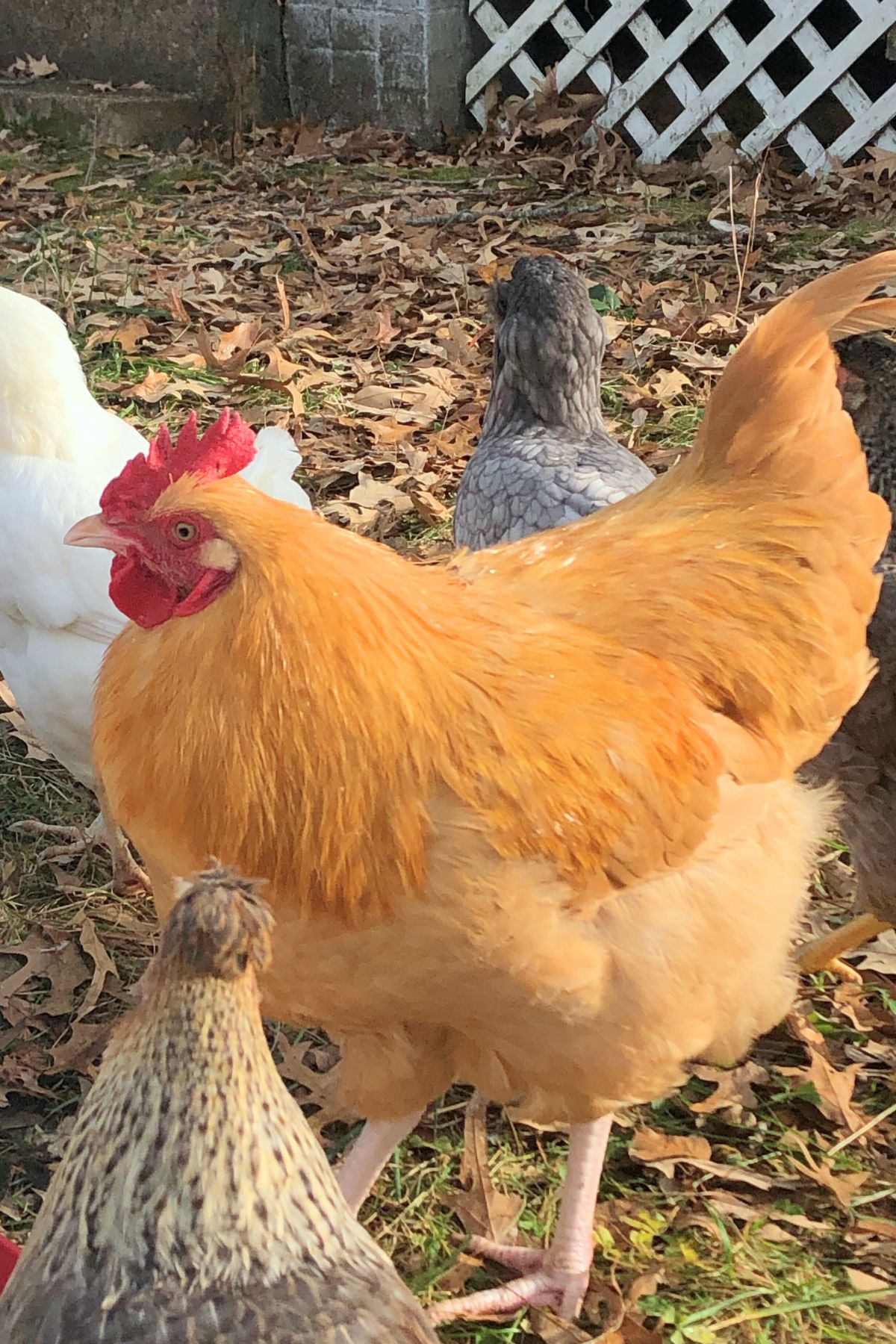
But this doesn’t mean that will be your experience. They do have a good reputation as far as roosters go.
Should You Let Them Free Range?
I’ve always let all my chickens free-range. But I’ll be honest, I tend to lose Buff Orpington’s first. I don’t know if they aren’t good at hiding, if they’re slow because of their size, or what. If you do let them free range (they love it!), be prepared.
Chicken Shirt Women Cute Farm T Shirts Mom Country Causal Short Sleeve Tees Tops RedCANARY ROAD Chicken Mom Coffee Cup, Chicken Mug, Crazy Chicken Lady Gift, Chicken Gift, Chicken Kitchen Decor, Chicken Farmer Gift, Backyard Farmer Gift, Chicken Mom GiftAebor Chicken Egg Basket Holder Metal Wire Hen Shaped Kitchen Storage Rack, Egg Basket with Handle, Holds 15-20 Eggs, for Kitchen Living Room Home Décor Decoration Storage
Are They Right for You?
Buff Orpingtons are perfect if:
- You want friendly chickens that are easy to handle
- You’re new to chicken keeping
- You live somewhere with cold winters
- You care more about having sweet pets than maximum egg production
- You want to raise your own chicks (they go broody and are excellent mothers)
- You will keep your flock 100% females
Maybe skip them if:
- You live somewhere REALLY hot (although we have hot summers and they survive our warmer months just fine)
- You need the absolute most efficient egg layers
- You’re trying to save money on feed
- You need birds that are good at avoiding predators
Buff Orpingtons for Meat Production
The origins of the Buff Orpington chicken breed can be traced back to England in the late 1880s.
William Cook, an avid poultry breeder living in the county of Kent, set out to create the ultimate dual-purpose breed: one that would produce both lots of eggs and good meat. While they
Cook developed the Orpington breed through careful crossbreeding of minorca and other heritage breeds. The final touch was breeding them to have a soft “buff “color, resulting in the Buff Orpington chickens we know and love today.
This breed is beautiful, sweet, and lay enough eggs to keep most families happy. And remember: you don’t need a farm or years of experience to be a great chicken keeper. These friendly birds are perfect for learning as you go.
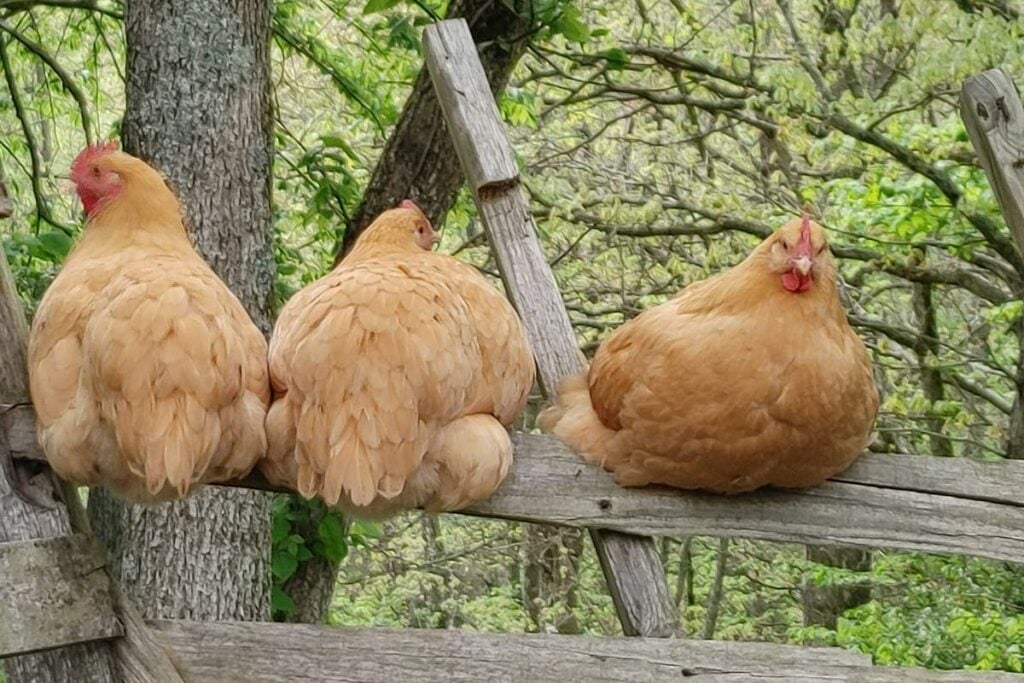
Love,










